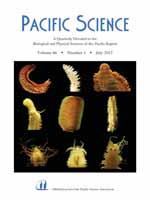Life history and growth of the surf clam, Mactra veneriformis, were examined in a tidal flat area of Tokyo Bay from November 2002 to November 2004. Gonads of both sexes began to develop in March, and animals with mature gonads (ripe phase) were observed from spring to summer (April-August). Most of the animals showed signs of having finally spawned by September, indicating that spawning occurs from spring to summer. Moreover new cohorts were established several times in both years, with the largest settlement occurring in July. These findings suggest that surf clams in this area spawn several times a year. By monitoring increase in shell length of these cohorts, we found that shell growth was rapid in the first year, reaching approximately 35–40 mm 1 yr after settlement. In the second year, shell lengths exceeded 40 mm. Most of the animals died after the spawning season in the second year. The observation of several settlement events per year and a short life span differed considerably from characteristics of M. veneriformis along the Korean coast.
How to translate text using browser tools
1 July 2012
Life History Characteristics of the Surf Clam Mactra veneriformis (Bivalvia: Veneroida: Mactridae) on a Sandy Tidal Flat in Tokyo Bay, Japan
Kazuyoshi Hashizume,
Norihisa Tatarazako,
Kunio Kohata,
Yasuo Nakamura,
Masatoshi Morita
ACCESS THE FULL ARTICLE

Pacific Science
Vol. 66 • No. 3
July 2012
Vol. 66 • No. 3
July 2012




